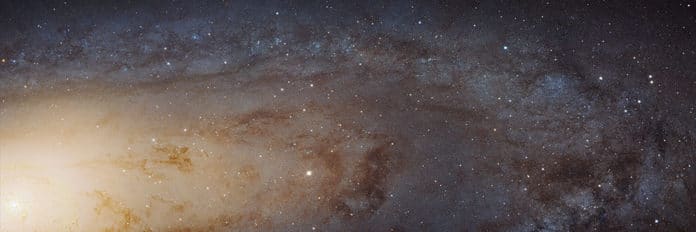The Andromeda galaxy, also known as Messier 31, or M31, is some 2.5 million light years away from the Earth. It is the nearest large neighbor of our Milky Way.
Recently NASA shared the ‘largest-ever’ image assembled of the Andromeda galaxy by the Hubble Space Telescope. It is the sharpest large composite image ever taken of our galactic next-door neighbor.
The Hubble Space Telescope is powerful enough to resolve individual stars in a 61,000-light-year-long stretch of the galaxy’s pancake-shaped disk. It’s comparable to taking a beach photo and resolving individual sand grains. More than 100 million stars may be observed in this expansive image, some of which are contained in the hundreds of star clusters visible within the disc.
The Andromeda galaxy is only 2.5 million light-years from Earth, so it is a much bigger target in the sky than the galaxies Hubble photographs routinely. It means the Hubble survey is assembled into a mosaic image using 7,398 exposures taken over 411 individual pointings.
Hubble follows tightly clustered stars that extend from the galaxy’s innermost hub, which can be seen on the left. The picture sweeps from the galaxy’s core bulge via lanes of stars and dust to the sparser outer disc as it moves away from it.
Large clusters of young blue stars show the locations of star clusters and star-forming areas. The blue ring-like shape on the right side of the image is where the stars congregate. Dark silhouettes trace complex dust structures. A uniform distribution of colder red stars, which have been around billions of years, covers the entire galaxy.
The panorama is the product of the Panchromatic Hubble Andromeda Treasury (PHAT) program. Images were obtained from viewing the galaxy in near-ultraviolet, visible, and near-infrared wavelengths using the Advanced Camera for Surveys and the Wide Field Camera 3 aboard Hubble. This cropped view shows a 48,000-light-year-long stretch of the galaxy in its natural visible-light color, as photographed with Hubble’s Advanced Camera for Surveys in red and blue filters.
The panorama is being presented at the 225th Meeting of the Astronomical Society in Seattle, Washington.
